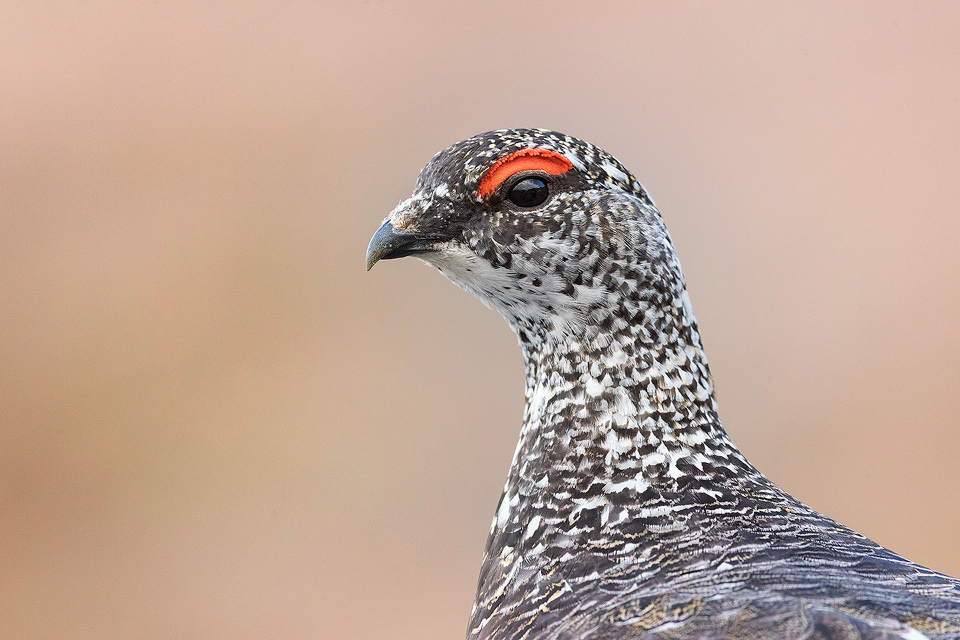Ptarmigan Portrait
Detailed portrait of a male Ptarmigan. Cairngorms National Park, Scotland. Another member of the grouse family, many people choose not to photograph ptarmigan during the Spring, but I think they look fantastic in their patchwork plumage!
As I hadn’t photographed them before, I wasn’t entirely sure where to go. But after some research on typical habitat, I began the two-hour hike into the mountains to begin my search. After a fruitless couple of hours, I eventually heard the distinctive croaking calls high up on the mountain side. Ptarmigan are amazingly well camouflaged in their habitat, so although I could hear them, I couldn’t see any birds at all! All I could do was sit and wait for one to show itself, and show they did!
In flight the white wings stand out like a sore thumb against the dusty red rock and I carefully manoeuvred through the boulder field towards where it had landed. Although initially they were very wary of me, I was amazed at how confiding they were when approached with proper fieldcraft and I was able to get within a couple of metres of several individuals. This striking male was very feisty, displaying and chasing off any competitors hoping for a chance with his lady, hidden away in the rocks.
More About Rock Ptarmigan
Rock Ptarmigan are members of the grouse family; in the UK this also includes red grouse, black grouse and capercaillie. The name Ptarmigan is derived from the Gaelic word tàrmachan which means ‘croaker’ a description of their distinctive rasping call. Around the rest of the world Ptarmigan have many names; in America they are known as “Snow chickens”, “hare feet” in Greek and “thunder birds” in Japan.
Ptarmigan are found only on the highest mountains in the Highlands of Scotland, where they rarely move far from their breeding sites, except in extreme circumstances where they may be seen on the edge of mountain forests. Highly competitive birds, the males compete primarily for areas rich in food such as heather and bilberry bushes, ideal sites in which the female will create a nest scrape for her eggs in between the rocks on the barren tundra.
Ptarmigan are instantly recognisable in Winter thanks to their pure white plumage that helps them to blend in with their arctic habitat. During Spring and Summer, they shed this plumage and turn a mottled brown/grey.
Find more about Ptarmigan here.
